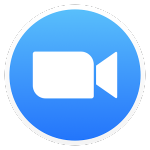Calculus
Placement Information
Placement Process
One critical factor for restful learning is the proper placement of students. If you are unsure which level is the best fit for your student, reach out to the instructor you are considering. Once registered, anticipate contact regarding placement evaluations from instructors by May 15th and throughout the summer. Students must be registered to enter the placement process. Early placement exams may allow time for tutoring or additional review based on the outcomes. See more about placement evaluations in our Student-Parent Handbook.
Math Placement Process
For registered students, please anticipate contact regarding placement evaluations from instructors by May 15th and throughout the summer. Students must be registered in a math course to receive a placement assessment. Math classes have a detailed and specific placement process.
Read more about the math placement process here.
Watch the math placement process video with our department chair, Dr. Fransell Riley, here.
See the Math Scope and Sequence here.
Required Materials:
Books and supplies are not included in the purchase of the course.
- No Textbook is required for this course. We will be using Khan Academy, which is a free resource, and the instructor will be sharing Google documents with you.

Eric Robinson
[email protected]Eric Robinson has a MFA (Master of Fine Arts) degree in printmaking from Iowa State University and a BS in secondary math education from Western Governors University. Eric and his wife homeschool, so he has taught math from number recognition through Calculus 2. Having taught in private Christian (protestant and Catholic) schools and in public schools as well as tutoring in person and online, he is excited to teach courses in the Great Hall of Scholé Academy so that learning can be the true focus.
Eric was attracted to Scholé Academy for the commitment to restful learning. Eric loves the beauty of mathematical reasoning. He loves the feeling of accomplishment and confidence that comes from learning math. He loves the lightbulb moments, and he loves the real skills math builds--skills that make so many things doable and possible.
Eric also loves the Word of God. God is a God of truth and order, and so we find in scripture truth and logical arguments that help us to understand creation--God, ourselves, one another, redemptive history, and our hope in Christ Jesus. Eric loves sharing the Word of God to start every course session. Eric does that for the same reason he learns and teaches math: because doing so enriches us and helps us to discover the truths God has made. As Proverbs 25:2 says, "It is the glory of God to conceal a matter, but the glory of kings is to search out a matter."
Quarter 1
- The two central questions of calculus
- Limits
- Derivative Functions
- The limit definition of derivative
- Tangent lines
- Continuity and other features of functions
- Statement-reason proofs
- Calculus proofs
- The order in which topics are presented may vary according to instructor and course section.
Quarter 2
- Derivative rules
- Theorems: squeeze theorem, mean value theorem, intermediate value theorem
- Derivatives of inverse functions
- Implicit differentiation
- Second derivatives
- Derivatives as they relate to position, velocity, acceleration, and jerk
- Contextual problems requiring derivative calculus
- The order in which topics are presented may vary according to instructor and course section.
Quarter 3
- More contextual problems requiring derivative calculus
- The central question of integral calculus
- Meanings and properties of integrals
- Approximating integrals using Riemann sums
- Integral as the limit of a Riemann sum
- Fundamental theorem of calculus: how derivatives and integrals are related
- Reverse power rule
- More proofs
- The order in which topics are presented may vary according to instructor and course section.
Quarter 4
- Common integrals (with proofs)
- Methods of integration: u-substitution, using long division, completing the square, integration by parts
- Differential equations and slope fields
- Contextual problems requiring integral calculus: motion problems, the area between curves, volumes of solids including cross-sectional solids and solids formed by rotation
- The order in which topics are presented may vary according to instructor and course section.
![]() Computer: You will
need a stable, reliable computer, running with a processor with a speed of 1 GHz or better
on one of the following operating systems: Mac OS X with Mac OS 10.7 or later; Windows 8,
7, Vista (with SP1 or later), or XP (with SP3 or later). We do not recommend using an
iPad or other tablet for joining classes. An inexpensive laptop or netbook would be much
better solutions, as they enable you to plug an Ethernet cable directly into your computer.
Please note that Chromebooks are allowed but not preferred, as they do not support certain
features of the Zoom video conference software such as breakout sessions and annotation,
which may be used by our teachers for class activities.
Computer: You will
need a stable, reliable computer, running with a processor with a speed of 1 GHz or better
on one of the following operating systems: Mac OS X with Mac OS 10.7 or later; Windows 8,
7, Vista (with SP1 or later), or XP (with SP3 or later). We do not recommend using an
iPad or other tablet for joining classes. An inexpensive laptop or netbook would be much
better solutions, as they enable you to plug an Ethernet cable directly into your computer.
Please note that Chromebooks are allowed but not preferred, as they do not support certain
features of the Zoom video conference software such as breakout sessions and annotation,
which may be used by our teachers for class activities.
![]() High-Speed Internet Connection:
You will also need access to high-speed Internet, preferably accessible via Ethernet
cable right into your computer. Using Wi-Fi may work, but will not guarantee you the optimal
use of your bandwidth. The faster your Internet, the better. We recommend using a connection
with a download/upload speed of 5/1 Mbps or better. You can test your Internet connection here.
High-Speed Internet Connection:
You will also need access to high-speed Internet, preferably accessible via Ethernet
cable right into your computer. Using Wi-Fi may work, but will not guarantee you the optimal
use of your bandwidth. The faster your Internet, the better. We recommend using a connection
with a download/upload speed of 5/1 Mbps or better. You can test your Internet connection here.
![]() Webcam: You may
use an external webcam or one that is built in to the computer. Webcam Recommendations:
Good (PC only) | Best (Mac and PC)
Webcam: You may
use an external webcam or one that is built in to the computer. Webcam Recommendations:
Good (PC only) | Best (Mac and PC)
![]() Headset: We recommend
using a headset rather than a built-in microphone and speakers. Using a headset reduces the
level of background noise heard by the entire class. Headset Recommendations: USB | 3.5mm
Headset: We recommend
using a headset rather than a built-in microphone and speakers. Using a headset reduces the
level of background noise heard by the entire class. Headset Recommendations: USB | 3.5mm
![]() Zoom: We use a web
conferencing software called Zoom for our classes, which enables students and teachers to
gather from around the globe face to face in real time. Zoom is free to download and easy
to use.
Zoom: We use a web
conferencing software called Zoom for our classes, which enables students and teachers to
gather from around the globe face to face in real time. Zoom is free to download and easy
to use.  To
download Zoom:
To
download Zoom:
- Visit zoom.us/download.
- Click to download the first option listed, Zoom Client for Meetings.
- Open and run the installer on your computer.
- In August, students will be provided with instructions and a link for joining their particular class.
![]() Scanner: In this
class, students frequently submit homework assignments by scanning pages from their workbooks.
Students and/or their parents should have easy access to a scanner and the ability to use it.
Scanner: In this
class, students frequently submit homework assignments by scanning pages from their workbooks.
Students and/or their parents should have easy access to a scanner and the ability to use it.
Step 1
Step 2
Step 3
Step 4
Explore our courses!
First, read the available course descriptions, noting prerequisites, target grades, and course objectives. If you think your student is prepared for the course, go ahead and register. After registration, a placement assessment may be provided to students, depending on the course and the student’s previous enrollment with Scholé Academy. Registration is finalized when the student’s placement assessment has been returned by the course instructor with placement confirmation.
All Courses | By Grade
Read the Student-Parent Handbook.
Please take careful note of our teaching philosophy, our technology requirements, our school policies, the parent agreement, and the distinctions between our grade levels.
Double-check the course section dates and times.
Make sure they don't conflict with other activities in your schedule or other courses you are purchasing. Our system will not catch double-bookings!
You're ready to add course selections to your cart!
Our Assistant to the Principal will be in touch with you after your enrollment to help you with next steps, including any placement evaluations that may be required for your course selections.
This registration will be finalized when the student's placement assessment has been returned by the course instructor with placement confirmation.
